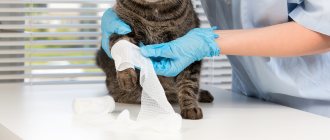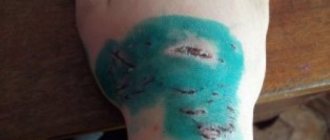During the warm summer months, trees, plants and flowers bloom, birds sing, and our cats spend more time outdoors. Local wildlife is at its peak as summer takes advantage of all the fruit on offer. Unfortunately, this is the time when insect bites most affect both us and our pets. Bees and wasps are a common cause of insect bites in cats. In general, bees and wasps do not bite unless provoked. Cats can be "accidentally" stung if they touch, step on, or kick wasps and bees.
Bees and wasps are known to be venomous insects that inject venom into an unsuspecting victim when they bite. When a venom is injected into an animal, it can cause local tissue reactions or a whole body reaction in allergic or sensitive cats. More adventurous or inquisitive cats, such as kittens, may be more likely to suffer from wasp and bee stings as they are more likely to explore or try to catch these insects. Cats have a strong prey drive, which makes them more likely to be stung by wasps or bees than other species.
Signs that your cat has been stung by a bee or wasp
If you've ever been stung by a bee or wasp, you'll understand that it can be painful and irritating. Bee venom is acidic with a pH of 5.0 to 5.5 and is therefore very irritating to the affected tissue. Wasp venom is closer to neutral at a pH of about 6.8-6.9. Nonallergic reactions usually develop within a few hours, but severe allergic reactions (anaphylaxis) tend to occur more quickly and often within one hour of a cat being stung by a bee or wasp. The consequences of a bee or wasp sting will depend on where your cat was stung, how many stings she received, and whether she has been stung before. Cats are very good at hiding pain or discomfort, but some of the symptoms they will show if they are stung by a bee or wasp are listed below:
© shutterstock
- By unexpectedly nipping or licking a body part - you may have noticed that they were playing with a wasp or bee in the garden a few minutes before.
- Swelling, redness, itching and local irritation - at the site of a bee or wasp sting. Cats are usually stung on the paw, face or nose. In long-haired cats, these skin changes may be more difficult to detect.
- Pain – Your cat may vocalize more frequently than usual.
- Cats that may have a bee sting in their mouth or a wasp sting in their nose may paw at the area due to discomfort .
- Urticaria is an allergic skin pattern characterized by multiple swellings throughout the body.
- Trouble breathing or difficulty swallowing – If your cat is stung by a bee or wasp on the face or in the mouth, such as the tongue, it may cause swelling of the face, mouth and/or neck.
- Drooling, vomiting, diarrhea, rapid breathing, difficulty breathing, pale gums (shock), and collapse may occur if your cat develops anaphylaxis as a result of a wasp or bee sting. This happens more often with cats that have been stung before.
First aid for a pet
Complications after bites sometimes appear so quickly that there is simply no time to go to a specialist. In such a situation, the owner must be able to provide first aid himself.
To do this, you can use the following reminder:
- Wash the wound with soap and water to prevent possible infection.
- Wipe the bite area with table vinegar diluted in water in a ratio of one to one. This will help relieve pain and relieve itching.
- Add ice cubes. Exposure to cold inhibits the inflammatory process and reduces swelling.
If the wound is on one of the limbs, then you can limit yourself to a cold compress on it.
Are bee or wasp stings harmful to cats?
In most cases, a bee or wasp sting is not life-threatening to your cat. However, they can be very irritating and distressing to your pet, and if stung in certain areas or multiple times, it can lead to more severe symptoms.
Cats that are stung and develop severe swelling in the mouth and neck may have a narrowing of the airways. If your cat has been stung by a bee or wasp and is struggling to breathe, then this is an emergency and you should contact your veterinarian immediately.
Bites to the paws can cause pain when walking and may cause your cat to limp. It may take a few days for the lameness to go away as the swelling subsides.
Prevention
Prevention of bee stings can only be done by protecting your home - mosquito nets on windows, nets on doors. Animal bowls should not be placed outside.
And, of course, pets must be closely monitored and treated with repellents.
Most often, a bee sting does not pose a danger to a cat; the symptoms go away within a few days, but the location of the poison causes great suffering to the pet. If the animal has been bitten by bees before and has not had any allergic reactions, then the cat will tolerate another bite well.
Can cats have allergic reactions to bee and wasp stings?
Cats stung by bees or wasps can develop severe and life-threatening reactions if they are allergic to the insect venom. This reaction is most often seen in cats that have been stung previously. This is the result of the cat becoming “sensitized” to the bite and the immune system overreacting the second time around. Anaphylaxis is an emergency and can be fatal if your cat does not receive prompt veterinary treatment, which usually includes supplemental oxygen, an IV, and medications such as epinephrine, steroids, and antihistamines.
How to protect your pets
In summer, it is necessary to protect your cat from bites of various types of insects. It will not be possible to completely protect your pet from the environment, so you should make his stay in nature less dangerous.
Prevention measures:
- It is necessary to install mosquito nets on windows indoors, especially outside the city.
- It is necessary to clean the garden plot and destroy wasp and bee nests.
- The cat should be fed and watered only indoors, not outdoors. This way, the risk of swallowing a dangerous insect with food can be minimized.
- Before going outside, the cat is treated with repellents, which makes it possible to protect his stay on the street for several hours.
Important! If all these measures are observed, insect damage to the animal can be eliminated.
What to do
- Examine your pet - find out how many times your cat has been stung and where she was stung, such as the nose, mouth, face, paw or body. Beware, your cat may be in pain and may try to bite or scratch you. Check your pet for signs of anaphylaxis.
- Remove the stinger - If your cat was stung by a bee, the stinger may still be in the skin. Stings left in the skin can cause further release of venom, so a bee sting must be removed immediately. The best way to remove the stinger is to use a bank card or something similar. The card is stroked along the edge, carefully over the pet's fur to remove the sting. If you are unable to remove the sting with a card, tweezers can be used, but this may cause further release of toxins if the sting is squeezed. It is not necessary to remove wasp stings.
- Watch for an allergic reaction - this reaction usually occurs fairly quickly after the bite, usually within one hour. If your cat is unconscious or has trouble breathing, contact your veterinarian immediately as she will need emergency care.
- Call your veterinarian if your pet is bitten on the face, mouth, or throat, or multiple times —urgent care is needed for bites to the face, neck, or mouth, as severe swelling in these areas can make it difficult for your pet to breathe. Your veterinarian may prescribe medications for your pet to reduce swelling, such as steroids and antihistamines. They may also want to monitor your pet for a few hours to make sure the swelling doesn't get worse.
Signs of anaphylactic shock
- weakness, unnatural behavior: the animal is lethargic or overly excited;
- vomit;
- mucous membranes are pale or bluish;
- breathing is difficult, wheezing is heard;
- the pulse quickens and becomes weak;
- cramps, involuntary urination.
Anaphylactic shock occurs in one animal in a thousand, but it can cause death. If a cat shows signs of anaphylactic shock after an insect bite, it is necessary to take the animal to the veterinarian as soon as possible. A cat can die within an hour if you don't give it help.
Home remedies for bee and wasp stings
If the sting is mild, it may be appropriate to treat the bee or wasp sting at home. However, you should exercise caution as the bites are often painful and your cat may lash out. Ice packs can be placed on the bite to reduce the swelling and pain your cat experiences. Be sure to cover the ice packs with a kitchen towel or something similar to prevent your cat from getting frostbite or becoming uncomfortable.
Since bee venom is acidic, adding alkali can help neutralize its effects. Bicarbonate of soda (baking soda) can be diluted with water and applied as a paste to the local area. Chamomile lotion has a similar effect. If these products are not available, applying a small amount of toothpaste to the affected area may also help. Do not use any other alkaline products without first consulting your veterinarian.
Antihistamines such as Benadryl may also be useful in treating bee or wasp stings in pets. However, call your veterinarian first to find out if it is safe for your pet and how much to use, since the dosage for pets is different than the dosage for humans. There are many different antihistamines available on the market, but some ingredients are harmful to pets, so check with your veterinarian first to see if it is safe.
Posted by Christian Adams An American expat living in Metro Manila, Philippines for over a decade, Christian is a lifelong cat lover and the proud father of two rescue cats, Trixie and Chloe. Both girls used to be among the crowds of homeless people who roam the cities and countryside. Three-year-old Trixie was rescued from a litter found under a neighbor's porch, and two-year-old Chloe was brought home by Christian's young son, Henry, who discovered the crying kitten in the parking lot.
Antihistamines
Antihistamines
After a bee stings a cat's nose or other place on its face, an antihistamine should be given to avoid severe allergies. There is no special cat drug. Experts advise:
- Prednisolone. At home, give 0.5 tablets. Turn it into powder, dilute it with water, and pour it into the cat’s mouth. If immediate relief of an allergic reaction is required, an injection is given intramuscularly and 0.5 ml of solution is injected.
- Dexamethasone. More suitable for obvious signs of allergies - vomiting, nausea, difficulty breathing. An injection is given with a solution of 0.2 ml.
- Diazolin. It is recommended if a bee has bitten a kitten, an adult cat, or a cat. Dose – 0.5 tablets at a time. On the first day, an antihistamine is given three times.
- L-cet. A modern antihistamine is produced in the form of a suspension or tablets. In the first case, give 0.5 teaspoon per day, in the second - ¼ of the tablet.
To save a cat’s life after a bee sting, you can give any antihistamine that is in your home medicine cabinet, but then you should show your pet to a specialist. Carry out further therapy under the supervision of a veterinarian.
Important!
If a bee bites a cat on the paw, there is no particular cause for concern. But an animal may have an individual intolerance to bee venom. In this case, the consequences are unpredictable, the paw noticeably swells. To avoid complications, you need to give an antihistamine immediately after discovering a bite.
How to recognize a bite
You can notice the first symptoms by the cat's behavior - the animal meows anxiously, limps and licks the bite site. But sometimes the place itself is not so easy to find. Felines can show aggression, hiss and rush at the owner. Visually you can determine the location of the bite.
| Nose | When a cat is bitten, the nose becomes red and swollen. To make the tumor go down, you need to use special medications. If the tumor is severe, consequences may appear - problems with nutrition and breathing. |
| Cheeks | A furry bite can appear not only in marks on the cheeks, but also spread across the entire face. The cheeks become swollen and swollen, and disorientation may occur. |
| Language | The most dangerous bite for a cat, because it may not be immediately detected. Symptoms may include excessive salivation and vomiting. With a strong bite, swelling of the nasopharynx may occur. It is advised to immediately show the cat to a doctor. |
| Lips | A cat's lips bulge and swell when bitten. Cats may try to relieve pain on their own by leaning against cold objects. A cold compress will help relieve symptoms. |
| Paws | The first sign will be visual - swelling. But the cat will not behave as usual, limping and licking its paw. |
When is it necessary to urgently contact a veterinarian?
If your pet is bitten in the face or mouth, you should immediately show your pet to a doctor. This must be done even if there is no strong redness upon visual inspection. Such damage can cause swelling of the larynx, leading to difficulty breathing and suffocation.
Other cases where assistance from a qualified professional may be required:
- with several bites at the same time;
- in the case where a small kitten was injured;
- if the sting gets into the eye.
Where do bites most often occur?
- Most often, wasps and bees sting in the area of the head and pads of the front paws. This is explained by the fact that cats try to catch and grab insects with their teeth, satisfying their predatory instincts. The paws, mouth, lips and cheeks fall under the sting.
- The groin and abdomen are the next most common - the cat can lie down on the grass, where at that moment a wasp or bee was located on the plants.
- Bites to all other parts of the body are extremely rare. Firstly, this is due to the thick coat, which protects (with the exception of hairless breeds). And, secondly, usually chaotic bites anywhere are inflicted only by angry insects. And cats usually leave them alone after the first attack and run away. Therefore, bites to the body are quite rare.
Treatment
There are no special cat medications available for the treatment of insect bites, so people turn to traditional medications for help. The pet’s body’s reaction to the wasp toxin varies: from a small swelling to an anaphylactic shock state.
Read also: How does a baby pee in the womb?
If there are signs of the latter, immediate hospitalization of the cat is required. A weak inflammatory focus can be stopped with improvised drugs from the first aid kit or at home.
Pills
Often, animal owners, when symptoms of damage appear, use homeopathic Apis tablets, in a dosage of two or three pieces. They quickly remove the risk of developing a further allergic reaction. If your pet has previously suffered from severe forms of allergies, you should always have this medication at home.
It is advisable to use corticosteroids. This series of drugs is prescribed by a doctor and refers to hormonal anti-inflammatory medications. Experienced cat breeders use Prednisolone in the form of pills, at a rate of 0.5 - 1 mg of the drug per kilogram of animal weight.
Tags
the cat was bitten by a wasp Consequences of a wasp sting When a wasp stung A bee sting A hymenoptera sting Urine. A bite in a cat was bitten by a wasp wasp bite wasp bite place of a wasp sting Cats Cats Cats Cats' bodies can be detected by a cat's body bitten cats lead angora cats have if a cat was bitten when a cat was bitten by a wasp bite by a wasp kitten the bite of a wasp stings or wasps can Particularly dangerous wasp bitten by a wasp sting for cats Grooming cats Feeding cats Neutering cats for cats lives of cats for cats Grooming cats A bee sting or than a bee. or a bee appears or a bee. bitten by a bee. A bee tries to bite a bee
pawallergiesbreathingcauseanimaldiseasesstungdoctoreyesrodentsorganismyoursuchcommentillnessothersimmediatelyanyveterinarian
Prognosis and affected area
In most cases, when a cat is bitten by a wasp, the pet’s body is able to cope with the lesion on its own. Swelling and painful symptoms disappear after a few days. The stung limb, even with significant enlargement, will return to normal size after 3-4 days.
In some cases, signs of allergy, hyperemia of the bite site, may be completely absent. The animal's condition should be closely monitored; pathological manifestations may be delayed.
The site of a stinging insect bite may not be noticeable due to the animal's long fur. If pathological effects are suspected, a thorough examination should be performed. The areas most susceptible to bites are the cat's limbs (pads) and face. Chaotic damage is rare. The animal stops hunting and quickly retreats when receiving the first sting strike.
What is first aid?
What to do if a cat is bitten by a bee or wasp? In any case, you will have to provide first aid yourself, and then go to the veterinarian if the need arises.
Help algorithm:
- Place the cat in any cool place and give it complete rest. Be sure to bring it from the street into the house if everything happened in the yard.
- Observe the animal for just a few minutes to rule out symptoms of anaphylactic shock or suffocating edema, when you should rush to the veterinary clinic rather than try to help yourself.
- If you have the homeopathic medicine “Apis” in your home medicine cabinet, it is recommended to give the cat 5-10 drops orally with a small amount of water. This is especially true in cases where there is a history of insect bites and allergies to them - this should always be the case.
- Under control of the general condition, you should begin examining the animal’s body to understand where the insect bite occurred. If edema and swelling are found in the area of the larynx, then immediately take your pet to a specialist. Intubation may be necessary, and this can only be done by a specialist.
- Remember: wasps do not leave stings, only bees leave stings! If a cat has been bitten by a bee, you need to find a place with a protruding sting and carefully pull it out using tweezers. It is important not to flatten it, otherwise the intoxication reaction will intensify. If a wasp stings, you can try to lightly squeeze out the ichor with the remaining poison. But this manipulation is only suitable for the first minutes after an insect attack, because then swelling forms and the hole narrows so much that nothing can be squeezed out. During any manipulations at the site of swelling, the cat must be well secured - this is very painful!
After removing the sting and squeezing out any remaining toxins, the bite site can be treated with the following solutions and substances:
- fruit acids (rub with a piece of lemon, apple, orange, you can add a pulp of the pulp of these fruits);
- vinegar water (9% table or natural apple cider vinegar is mixed with water in a 1:1 ratio, a cotton swab is generously moistened and applied to the bite site. The exception is bites in the mouth or near the mouth);
- citric acid solution (make slightly acidic water, moisten a cotton swab, apply to the bite site);
- a soap solution made from laundry soap relieves itching (soap a cotton swab generously and periodically wash the wound);
- soda solution (dilute a third of a level teaspoon in 100 ml of water, wipe with a cotton swab dipped in the solution);
- ammonia (do not generously lubricate the bite site if it is not on the head - legs, stomach, back...);
- turmeric (sprinkle generously on the bite area, after moistening it with plain water).
Applying cold to the bite site
Take something cold (ice, some kind of product) out of the freezer, wrap it in a thin cotton towel or napkin and apply it for 10 seconds with the same breaks. Cold will sharply narrow the skin capillaries, preventing the spread of poison and increasing swelling. Cold can be applied before treating the bite site with topical solutions, especially if the animal has been injured by a wasp. Then cold is first applied, then local treatment is done.
Remedies used for animal bites
If your pet’s reaction to a bite is pronounced, then you can relieve the symptoms using the following medications:
- Prednisolone is available in the form of injections or tablets. For intramuscular administration, take 0.5 ml, for oral administration - half a tablet.
- Dexamethasone. This drug is administered only intramuscularly in a dosage of 0.2 ml.
- Benadryl. The only product that can be used for both adult animals and older kittens.
- Diazolin is available in tablets and is used in a dosage of half a tablet at a time.
In addition to the medications listed, there are others that have antihistamine properties. For example, suprastin, but it is used quite rarely, since it itself can cause an allergic reaction in some members of the cat family.
But even knowing what medications to use and in what dosage, you should not do it yourself. The first thing to do when signs of intoxication appear is to take your pet to a veterinarian.
Antihistamines can only be used after consultation with a specialist and, if it is not possible to go to him, you should at least consult by phone.
This will help avoid worsening the condition that can occur when trying to treat your cat on your own. In addition, such drugs can suppress the animal’s immunity, which may result in a bacterial infection due to the bite.
In some cases, exposure to poison leads to an increase in body temperature. It’s also not worth knocking it down yourself. Only a doctor can make the right decision that will not harm your beloved furry.
Sometimes clinics use adrenaline. But its independent use is prohibited, since there is a high risk of getting the opposite effect.
Watch the video: Help if a cat is bitten by a wasp
Pharmacy products
There are no special medications for cats.
- To eliminate minor allergies, creams based on medicinal herbs, tinctures, Zvezdochka balm, Bepanten, Menovazin are used.
- To eliminate moderate allergies, Fenistil gel is used.
- With a pronounced clinical picture, antiallergic hormonal ointments are required - Advantan, Elokom, Betamethasone, Triaccutane.
- If an infection gets into the wound, the sore spots are treated with a local antibiotic - Levomekol, Tetracycline, Erythromycin, Gentamicin.
The cat's skin should be treated 1-4 times a day; as the symptoms disappear, the dosage is reduced. Therapy lasts no more than 5 days. If the situation does not improve within 2 days, you need to show the cat to a veterinarian.
How to determine if an animal has been bitten by a wasp
In the summer, cats that are used to free-ranging or residents of private homes begin to spend more and more time outside. Cats are very curious animals, they are interested in everything, especially if the object of attention moves. An inexperienced cat may perceive a wasp as prey and try to catch it, or stir up a wasp’s nest, which buzzes and flashes so interestingly. As a result, the animal may suffer injury, accompanied by severe pain and itching.











